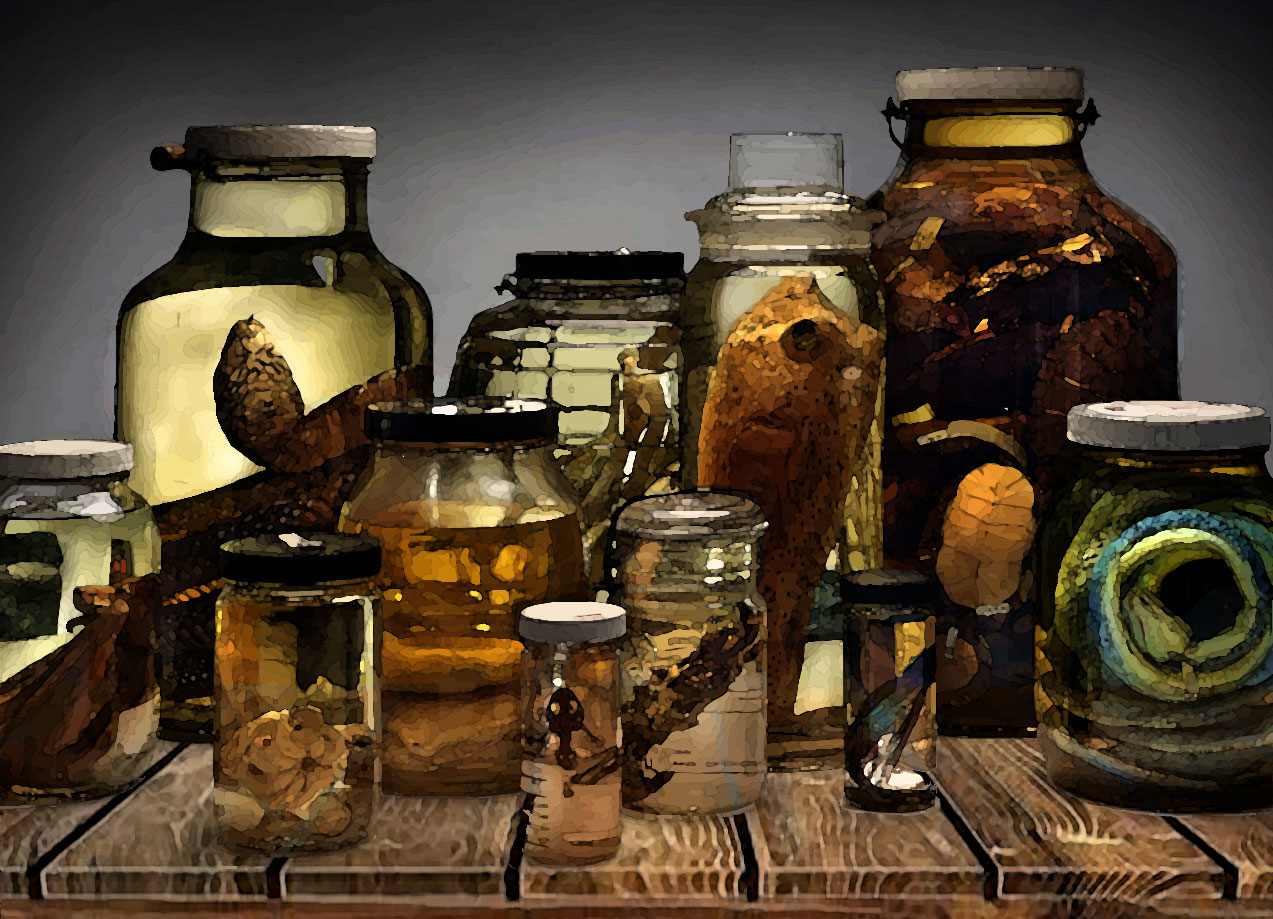Thaumaturgy
The Science of Magic

A school of magic believed to have been founded by the Wapenzi of Al-Wāāt ul'Ihāt Kathira. Like wizardry Thaumaturgy is a scholarly pursuit, though a practioners skill is often limited by inherent skills they are born with called "ujuzi" which traslates roughly to "knack". The foundation of Thaumaturgy is based on the collection, preservation and study of magical creatures. The thaumaturge extracts or distills the abilities from magical creatures and can imbue these abilities into objects, potions, and famously Manyoya, the feathers of a brightly colored and highly magical bird called the Mchawi Ndege, a species of tropical bird from the Hazina Dada islands. Manyoya are items of strong magic by themselves, and are quite dangerous to the uninitiated or unknowing. The Mwandishi, or Mwotaji wa Kaharabu - "Feather Scribes" are a rare and powerful class of thaumatuges that dedicate thier lives to manipulating the feathers while in a trance like state achived by smoking the amber like dried sap of the Maono Cactus found in the Deserts of the Bara Kusini. The sap imparts a particular ujuzi with Manyoya allowing them to manipulate the inherent magic of the feathers far beyond what most academic thaumaturges are capable of, but at a great cost to themselves.
Thaumaturgy is not generally a "field magic". The thaumaturge requires extensive reference materials, specimens, chemycals, time and a laboratory to practice the art. Though as a class the thaumaturge is often capable of magical feats, ujuzi, these abilities are often very specialized, and do not progress or change. However the magically imbued objects created by the skilled thaumaturge can be used by anyone.
Thaumatugic Glossary
Mahali Mizuka - The Inbetween
Translated directly, Mahali Mizuka means The place of ghosts/memories. Mahali Mizuka is the name of the thaumaturgic space the manyoya feathers open to users. The nature of this opening is dependent on how the feather is written, or scribed. Visitors to the Mahali Mizuka, are generally unaware that they are in the Inbetween. Some, known as the Mizimu, become aware that they are not in the normal world. - see Mahali Mizuka
Manyoya
Plural: Manyoya | Singular: Unyoya. Feathers plucked from the Mchawi Ndege - The Magician Bird (or Witch Bird), found only on Divai and Embe, of the Rich Sisters or Hazina Dada, Volcanic Spice Islands to the east of Al-Wāāt ul'Ihāt Kathira. Highly magical.
Manyoya have broad thaumaturic value as memory vessels, and in creation of thaumaturgic items, but are also used to allow passage to the Mahali Mizuka - see Manyoya.
Mchawi Ndege feathers, Manyoya, are distinct in taxonomy and common name from the feathers of other birds, which are called "Bulu" in Kawaida and and "Baloo" in Chumvi.
Mchawi Ndege - The Magician Bird
See Mchawi Ndege.
Mizimu - the Haunted
Considered an "ujuzi", or Knack, there are Unyoya users that become aware they are in the Mahali Mizuka. Very Rare, these users can pull themselves and others from the Inbetween. The Mizimu often are called to become a powerful class of thaumaturge known as the Mwandishi.
Mwandishi - Feather Scribes
The Mwandishi ar thaumaturges with a powerful abilities to manipulate Manyoya. Feather savants, who can shape and manipulate the Mahali Mizuka with the help of the amber like dried sap of the Maono Mhosa - The Mwandishi Dreaming Plant found in the Deserts of the Bara Kusini.
Thaumaturge
A Practitioner of thaumaturgy. See thaumaturge
Ujuzi
See Ujuzi - Knacking
Unyoya Uchawi - Feather Magic
Unyoya Uchawi is considered the highest form of thaumaturgy/magic among thaumaturges. See Manyoya.
Unyoya Mzuka - Feather Ghosts
The Unyoya Mzuka are souls lost in the Mahali Mizuka. Unaware they are in the Inbetween, the Unyoya Mzuka wander the Mahali Mizuka unable to escape back to the real world. The danger of becoming lost in the Mahali Mizuka is particularly high for those who partake in Unyoya Uchawi while already inside the Mahali Mizuka. Often a Mizimu is required to retrieve these lost souls from the Mahali Mizuka.